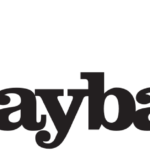Graybar Joins the $10 Billion Club
 Last week Graybar announced that their 2022 revenues exceeded $10 billion for the first time. And after the market growth of 20% annually for the past few years powered by COVID-driven supply chain issues, price increases and market dynamics and enhanced through acquisitions, Graybar now joins three other industry peers that are stalwarts of the industry, play in the same space (electrical materials, renewables, utility segments and/or the datacom market) in North America who presumably are over $10 billion – CED, Sonepar and Wesco. With their recent acquisition spree, Rexel is not far behind.
Last week Graybar announced that their 2022 revenues exceeded $10 billion for the first time. And after the market growth of 20% annually for the past few years powered by COVID-driven supply chain issues, price increases and market dynamics and enhanced through acquisitions, Graybar now joins three other industry peers that are stalwarts of the industry, play in the same space (electrical materials, renewables, utility segments and/or the datacom market) in North America who presumably are over $10 billion – CED, Sonepar and Wesco. With their recent acquisition spree, Rexel is not far behind.
Given Graybar’s success, I thought it could be insightful to learn more about their success from their 10-K.
- According to Graybar’s 10-K, the top 5 distributors in the electrical industry represent approximately 35% of total US sales, up from 30% in 2021. Industry consolidation continues.
- Graybar now has 325+ locations in the US and Canada and serves 146,000 customers.
- While Graybar is not focused on private labeling, one of its subsidiaries “may” contract to manufacture some of its lighting fixtures. (question then becomes, what type and could this become an internal growth opportunity by generating “value engineering” opportunities and/or serving the ESCO market?)
- On the role of technology, in talking about its competitors Graybar commented “Driven by customers’ omnichannel buying preferences and their desire to increase efficiency and productivity, digitalization is becoming increasingly important to both manufacturers and distributors in our industry.” (While most recognize this on the customer side, Graybar is acknowledging that key manufacturers are focused on this to determine “their” right channel. One of Graybar’s major suppliers that is focused on this is Schneider Electric.)
- Historically, 65% of Graybar sales are serviced via inventory, or, saying it another way, projects / direct ship, represents 35% of its business. This is up from 60% via inventory in 2021 (which could also be the impact of the switchgear / transformer backlog, hence the numbers being skewed.)
- It’s top 25 suppliers represent about 50% of sales (this is comparable for many distributors.)
- 21 RDCs (which is one of the reasons why Graybar endorsed the NEMRA POS Minimum Reporting Standards and, according to manufacturers, is the leader in POS reporting.)
- About 54% of Graybar’s employees are in sales / service roles. This is down from 56% in 2021.
- 2022 Performance
- $10.5 billion driven by price inflation, up 20.2%
- Gross margin of $2.17 billion, or 20.4%, driven by favorable sales mix and favorable vendor allowances. This is up 1.1% vs 2021.
- SG&A increased 16.3% due to higher compensation, more hires (up 600 people), higher benefits costs and higher outgoing freight expenses.
- Net income increased to $453 million, after pension settlements. This is a 4.3% of net sales.
- Acknowledged that they are seeing continued “steady demand but rising interest rates, inflation and employment issues are having an impact on markets served.” (which given that they increased SG&A and employment significantly, makes one wonder what sales / profit increase is needed to support current employment levels.)
- Customer mix:
- 56.8% construction, down from 58.5%
- Commercial, institutions and government represents 25.8%, up from 25.5%
- Industrial and utility segment represents 17.4%, up from 16%
- Graybar just over $1 billion in inventory with reserves for excess / obsolete of $17.9 million, or about 1.74%.
- Acquisitions
- 2022 combined preliminary purchase price for acquisitions was $83.7 million in cash.
- In 2021, the company’s acquisitions cost the company $89.7 million.
- Question – could the $80-90 million be what Graybar has allocated for acquisitions, or perhaps this is their percent of sales (about 1%?)
Takeaways
Congratulations to Graybar on breaking into the $10 billion club.
Some observations:
- Growth takes people, and Graybar has invested into more bodies (and yes, some came via acquisition) and more compensation / benefits. The company added 600 people. SG&A went up 16%. What happens as the business slows? What is the targeted revenue / employee? GM$ / employee? Graybar is known for investing in technology. Perhaps technology will improve productivity?
- Watch the inventory. As seen, Graybar added but market input (at least from manufacturers) is that they are seeing some reduction in distributor inventory ordering. This will also have an upstream impact on manufacturers in 2023 and residual impact on reps.
- Graybar’s business mix adjusted a little with industrial growing 1.5 points. Some of their acquisitions were in the industrial automation space. Is this an anomaly or a focused initiative for Graybar?
Although somewhat different business models, different customer mixes, and different scale, Wesco was up 18.8% in 2022 and Graybar was up 20.2%. Both claim “taking share”. So, if you are a distributor, what were you up in 2022 (and feel free to share anonymously, perhaps mention your state or geographic area)?




















